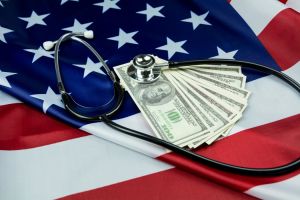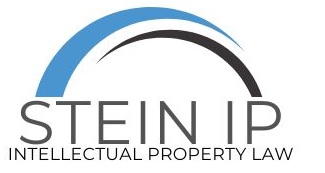- HOME
- > Blog Main Page
- > Coronavirus Funding Relief Options for Small Businesses
Coronavirus Funding Relief Options for Small Businesses
By David Ward
Coronavirus Funding Relief Options for Small Businesses

It’s no secret that small businesses are struggling to stay afloat during this pandemic. In response to the initial outbreak and economic concerns, the Coronavirus Aid, Relief, and Economic Security (CARES) Act was passed on March 27, 2020.[1] This legislation created new funding and forgivable loan programs through the Small Business Administration (SBA) to help small businesses stay open during and after the lockdowns. However, some confusion and turbulence has arisen around them as they have been put in practice. Here are some guidelines and information to consider if you or someone you know is looking for temporary economic relief due to the coronavirus.
Paycheck Protection Program (PPP)
In more normal times, the SBA offers a “7(a)” loan program to assist qualifying businesses with varying low-cost loans.[2] The CARES Act works on this existing framework to provide the Paycheck Protection Program (PPP), which so far legislation has allotted roughly $660 billion towards.[3] Businesses first need to qualify under industry-specific guidelines as a “small business” to apply. These parameters change based on industry, with some industries being measured in annual receipts and others by number of employees. [4] For instance, housing construction companies that have less than $39.5 million in annual receipts would qualify, as would a brewery with under 1,250 employees. With so many shifting parameters, there has been some confusion about what businesses qualify as “small,” but most businesses with less than 500 employees should qualify. Thankfully, the SBA now has a Size Standard Tool on their website to help determine what businesses qualify.[5]
Once qualified, businesses can receive forgivable loans under the PPP. The loans are forgivable if used for payroll costs, interest on mortgages, rent, and utilities, as long as enough workers are kept employed.[6]
As of June 5, 2020, the Paycheck Protection Flexibility Act (PPPFA) was signed into law.[7] This new legislation aimed to relax some of the stricter qualifications for forgiveness, as well as extend the timing for the program. Here is what that means for forgiveness qualifications: [8]
· Only 60% of loan proceeds must be used on payroll, as opposed to the original 75% requirement.
· Businesses have until December 31, 2020 to rehire their worker to pre-pandemic levels, subject to additional exemptions on a case-by-case basis. Previously, this deadline was June 30, 2020, and exemptions were less generous.
· Businesses must spend the loans within 24 weeks of receiving the loan, or by the end of 2020, whichever comes first. The original requirement was 8 weeks from receiving the loan.
· For those loans that are not forgiven, businesses now have five years to repay the loan at 1% interest. Payments are deferred for six months after the SBA makes a determination of forgiveness qualifications.
So far, over $500 billion has been lent out through the PPP program, with average loan sizes amounting to roughly $112,562.[9] More funding is still available as well, meaning businesses that still need assistance are now able to reevaluate whether they qualify for the PPP under the newer, more flexible, guidelines of the PPPFA.
Economic Injury Disaster Loan (EIDL)
Another option for some small business owners affected by the coronavirus is an EIDL Emergency Advance. This program provides a loan advance of up to $10,000 for businesses currently experiencing temporary difficulties during the pandemic, and the loan advance does not have to be repaid.[10] While funding limitations had temporarily limited these advances to agricultural businesses, as of June 15, 2020, the program was reopened to other qualified small businesses.[11] Any business with less than 500 employees is encouraged to apply, subject to the same sizing limitations as the PPP.
The EIDL program also offers qualifying small businesses low-cost loans of up to $2 million.[12] Interest rates for small businesses are 3.75%, with terms up to 30 years. These loans can be used for fixed debts, payroll, accounts payable, and other bills, subject to acceptable credit history and approval.
There is limited funding for these programs and submissions are processed on a first-come, first-served basis.[13] Any prospective businesses would be wise to start gathering financial information and apply as soon as possible.
Other SBA Relief
Companies that have existing relationship with an SBA Express Lender are also able to receive an Express Bridge Loan. This option allows businesses to receive up to $25,000 quickly, giving businesses a quick cash infusion while waiting for other program decisions or payments.[14]
For those who already had loans (other than PPP loans) with the SBA, the SBA is offering 6 months of principal, interest, and associated fees for select loans that are disbursed prior to September 27, 2020.[15]
Apply Sooner than Later
While there are several resources for those businesses struggling with the coronavirus, there is limited cash allotted to these programs. Most of them operate on a first-come, first-serve basis. Therefore, if you are a business struggling to make ends meet due to the coronavirus, it would be wise to investigate which program works best for you sooner than later.
[1] Coronavirus Aid, Relief, and Economic Security Act, Pub. L. No. 116–136 (2020).
[2] Types of 7(a) loans, SBA.gov, https://www.sba.gov/partners/lenders/7a-loan-program/types-7a-loans (last accessed June 11, 2020).
[3] Danielle Kurtzleben, Why the Small Business Rescue Program Has Slowed Way Down, National Public Radio (May 28, 2020), https://www.npr.org/2020/05/28/863387203/why-the-small-business-rescue-program-has-slowed-way-down.
[4] For more information on what businesses qualify, the SBA has a table of small business size standards available on their website: https://www.sba.gov/document/support--table-size-standards
[5] https://www.sba.gov/size-standards/
[6] Paycheck Protection Program, SBA.gov, https://www.sba.gov/funding-programs/loans/coronavirus-relief-options/paycheck-protection-program (last accessed June 11, 2020).
[7] Paycheck Protection Program Flexibility Act of 2020, Pub. L. No. 116–142 (2020).
[8] Kristen Konar et. al., UPDATE: Paycheck Protection Program Flexibility Act of 2020 Amends the CARES Act to Provide Borrowers Relief under the PPP, JDSupra (June 9, 2020), https://www.jdsupra.com/legalnews/update-paycheck-protection-program-87339/; AllBusiness, Trump Signs New Law Relaxing PPP Rules: What You Need To Know, Forbes (June 5, 2020), https://www.forbes.com/sites/allbusiness/2020/06/05/trump-signs-new-law-relaxing-ppp-rules-what-you-need-to-know/#64150a4331e3.
[9] Supra, note 4.
[10] Notice: Now Accepting New Applications for Economic Injury Disaster Loans and Advance, SBA.gov, https://www.sba.gov/funding-programs/disaster-assistance/coronavirus-covid-19#section-header-0 (last visited June 16, 2020).
[11] Id.
[12] COVID-19 Relief for Small Business, SBA.gov, at *4 https://www.sba.gov/sites/default/files/articles/EIDL_and_P3_4.1.2020_FINAL_2pm.pdf
[13] Supra, note 8.
[14] SBA Express Bridge Loans, SBA.gov, https://www.sba.gov/funding-programs/loans/coronavirus-relief-options/sba-express-bridge-loans (last accessed June 11, 2020).
[15] SBA Debt Relief, SBA.gov, https://www.sba.gov/funding-programs/loans/coronavirus-relief-options/sba-debt-relief (last accessed June 11, 2020).

TAGS:
RECENT POSTS
